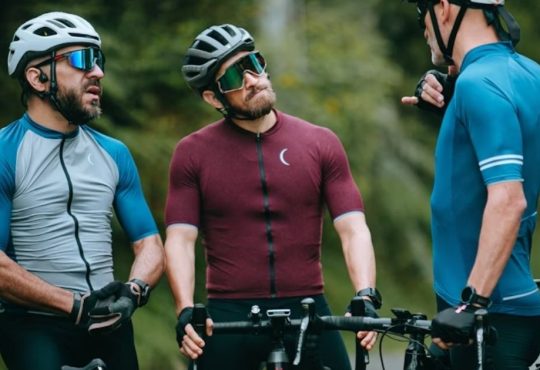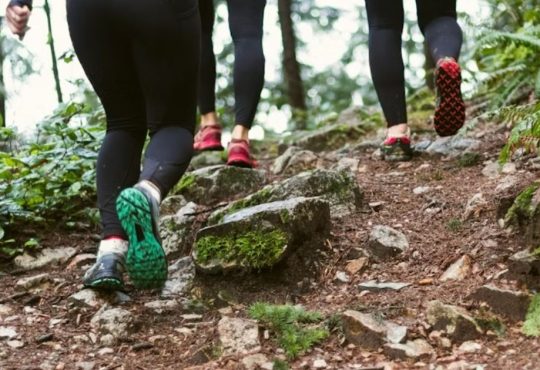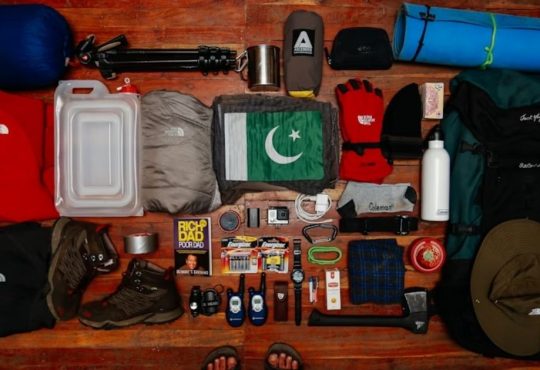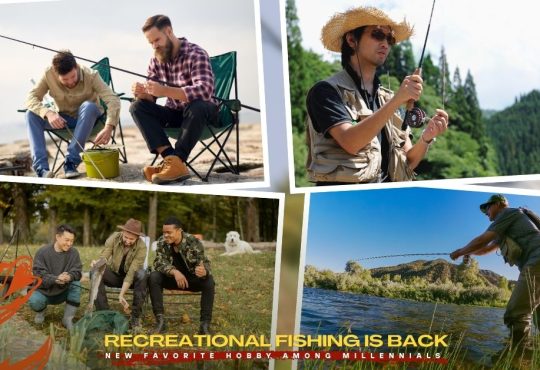Outdoor sports provide a unique opportunity to connect deeply with nature while challenging physical endurance and sharpening mental focus. Having the right footwear is essential to fully embrace these experiences and perform at your highest level. Whether navigating rocky mountain trails, sprinting along forest paths, or balancing uneven ground, the shoes you wear can significantly impact your safety and enjoyment.
This guide highlights the most critical types of footwear for popular outdoor activities such as hiking, trail running, and climbing. By understanding what to look for in shoes designed for these sports, you can prepare to face the wild with confidence, comfort, and the support needed to tackle any terrain. With the right gear on your feet, your outdoor adventures become safer and far more rewarding.
Find the Perfect Outdoor Sports Footwear for Any Adventure
1. Hiking Boots and Shoes
What They’re For
Hiking boots and shoes are engineered to provide the essential support, durability, and protection for long-distance walking across natural trails, rugged mountain landscapes, and rocky terrain. Whether navigating uneven dirt paths or scaling steep inclines, these shoes are built to keep your feet stable and comfortable for hours.
Key Features to Look For
- Ankle Support: High-cut hiking boots are designed to wrap securely around the ankle, providing vital protection against twists and sprains when traversing uneven or slippery ground. This support is crucial for reducing injury risk, especially when carrying a heavy backpack.
- Stiff Soles: The soles on hiking boots are generally stiffer than regular sneakers, offering enhanced stability and protection from sharp rocks, roots, and rough surfaces beneath your feet. This stiffness helps distribute your weight evenly and reduces foot fatigue.
- Waterproofing: Many hiking boots incorporate waterproof membranes like Gore-Tex to keep feet dry in wet conditions, such as crossing streams or hiking through damp grass and mud. Staying dry is key to preventing blisters and maintaining comfort.
- Traction: Deep, aggressive lugs on the outsole grip into soft or slippery surfaces, ensuring solid footing on loose gravel, wet rocks, or muddy trails.
Types of Hiking Footwear
- Lightweight Hiking Shoes provide enough support and protection for shorter day hikes or fast-paced trekking, offering flexibility and breathability.
- Midweight Hiking Boots: A versatile choice for moderate terrain, balancing durability, ankle support, and flexibility. Suitable for multi-day hikes with manageable loads.
- Heavy-Duty Backpacking Boots: Built to endure rugged, multi-day hikes with heavy backpacks, these boots offer maximum durability, support, and cushioning for prolonged wear.
2. Trail Running Shoes
What They’re For
Trail running shoes are crafted for running over rugged, natural trails where quick footwork, stability, and protection are paramount. They combine the speed and lightness of running shoes with the grip and durability needed to handle dirt, rocks, mud, and roots.
Key Features to Look For
- Aggressive Tread: Trail shoes feature specialized outsoles with deep, multidirectional lugs designed to grip loose dirt, slippery rocks, and muddy sections, preventing slips and ensuring footing on technical trails.
- Lightweight Construction: Unlike hiking boots, trail runners emphasize minimal weight, allowing for faster, more agile movement on the trail while maintaining enough protection.
- Toe Protection: Reinforced toe caps shield your feet from sharp rocks, roots, and other obstacles common on rugged terrain.
- Cushioning: These shoes balance shock absorption with ground feel, offering comfort for long distances while allowing runners to sense terrain variations for better control.
- Rock Plates: Many trail runners have embedded protective plates beneath the midsole that guard against sharp stones and debris.
Categories of Trail Running Shoes
- Minimalist/Light Trail Shoes: Designed for groomed or less technical trails, these shoes prioritize speed and natural foot movement.
- Rugged Trail Shoes: Built for more challenging, technical terrain with roots, rocks, and elevation changes, providing enhanced stability and protection.
- Max-Cushion Shoes: Ideal for ultrarunners and long-distance trail running, these provide extra cushioning to reduce fatigue over extended miles.
3. Approach Shoes
What They’re For
Approach shoes bridge the gap between hiking and climbing footwear. They are ideal for climbers and hikers who need to traverse mixed terrain, ranging from trail walking and rock scrambling to reaching climbing crags. These shoes combine the grip of climbing shoes with the comfort and support of hiking shoes.
Key Features to Look For
- Sticky Rubber Soles: The soles provide excellent traction on rock surfaces, similar to climbing shoes, helping maintain grip on steep or slippery rock.
- Durable Uppers: Constructed with abrasion-resistant materials, approach shoes withstand rough surfaces and friction from rocks and boulders.
- Climbing Toe: The toe box allows precise foot placements and edging on rock features, improving control during short climbs or scrambles.
- Lacing to the Toe: This design ensures a secure, snug fit that can be finely adjusted for hiking comfort and climbing precision.
Best Uses
- Hiking approaches to climbing areas where the terrain varies.
- Technical approaches that require scrambling over rocks and uneven surfaces.
- Short climbing routes or bouldering where shoe versatility is key.
4. Mountain Biking Shoes
What They’re For
Mountain biking shoes are engineered to maximize pedaling efficiency and provide secure footing on uneven off-road trails. They come in two main styles—clipless, which attach to pedal systems for maximum power transfer, and flat-pedal shoes designed for freeride and downhill riding, focusing on grip and flexibility.
Key Features to Look For
- Stiff Midsoles: A rigid midsole helps transfer energy directly from your foot to the pedals, improving pedaling efficiency and reducing fatigue on long rides.
- Grippy Outsoles: The soles offer excellent traction when walking, pushing your bike, or maneuvering over rocks and obstacles.
- Reinforced Toe Boxes: Built to protect toes from impacts with rocks, roots, or trail debris encountered on aggressive trails.
- Ventilation: Breathable materials and mesh panels keep your feet cool during intense, hot rides, preventing overheating and discomfort.
Types of MTB Shoes
- Clipless Shoes: These shoes are compatible with clip-in pedal systems and offer a locked-in connection for enhanced power transfer and control.
- Flat-Pedal Shoes: Featuring sticky rubber soles, these shoes provide grip and freedom of movement for technical trail riding and downhill runs.
5. Climbing Shoes
What They’re For
Climbing shoes are specialized footwear designed for rock climbing, where precision, grip, and sensitivity are essential for vertical movement on walls, boulders, and cliffs. These shoes fit snugly to maximize control on tiny footholds and optimize friction on climbing surfaces.
Key Features to Look For
- Tight Fit: A close, almost glove-like fit increases control and responsiveness, allowing climbers to feel the rock and maintain balance on small edges.
- Sticky Rubber Outsoles: High-friction rubber soles improve grip on indoor climbing walls and outdoor rock faces, which are critical for secure foot placements.
- Downturned Shape: Aggressively curved shoes help climbers tackle overhanging routes by concentrating power on the toes and improving edging ability.
- Hook-and-Loop or Lace Closures: These closure systems allow quick adjustments or precise tightening for optimal fit and comfort during climbs.
Types of Climbing Shoes
- Neutral: Comfortable, flat shoes suited for beginners or long, less technical climbs where all-day comfort is key.
- Moderate: Slightly downturned with a balance of comfort and performance, ideal for sport climbing and traditional routes.
- Aggressive: Highly downturned and asymmetrical, designed for advanced climbers tackling steep bouldering problems and challenging overhangs.
6. Waterproof and All-Terrain Shoes
What They’re For
These shoes are perfect for multi-sport adventurers or those entering wet, muddy, or snowy conditions. From wet hikes to obstacle races, weather-ready shoes keep you going when the elements turn against you.
Key Features to Look For
- Waterproof Membranes: Keep feet dry without sacrificing breathability.
- Gaiter Compatibility: Useful in snow, mud, or debris-heavy environments.
- High-Traction Soles: Tread that grips slippery or loose surfaces.
Best Uses
- Wet weather hiking or trail running.
- Snowy or slushy trails
- Adventure racing and mud runs
7. Sandals for Outdoor Use
What They’re For
Ideal for warm-weather outdoor activities that don’t require full-foot coverage, including water crossings, easy trails, and casual trekking.
Key Features to Look For
- Adjustable straps provide a secure, customizable fit, especially when navigating uneven terrain.
- Toe Protection: Closed-toe designs shield against stubs and abrasions.
- Grippy Soles: Prevent slips on wet rocks or muddy riverbanks.
Best Uses
- Water hiking
- Beach or river trails
- Casual travel and base camp wear
8. Snow and Cold-Weather Footwear
What They’re For
Specialized boots keep feet warm, dry, and secure on icy trails or alpine terrain when temperatures drop or snow piles up.
Key Features to Look For
- Insulation: Materials like Thinsulate or wool lining for warmth.
- Waterproof Shells: Prevent snowmelt from soaking through.
- Ice Grip Soles: Aggressive tread or even embedded metal spikes for traction.
- Crampon Compatibility: Necessary for glacier travel or mountaineering.
Types of Cold-Weather Boots
- Winter Hiking Boots: For snow-covered trails.
- Mountaineering Boots: For high-altitude climbs and glacier routes.
- Snow Boots: Designed for warmth and casual snow use.
What to Consider Before Buying Outdoor Sports Footwear
1. Terrain Type
Are you moving through rocky trails, muddy slopes, snow-covered paths, or desert sand? Terrain will largely dictate the kind of tread, waterproofing, and support you need.
2. Duration and Load
Longer trips or carrying a backpack call for more ankle support and cushioning. For quick, agile movement, lightweight shoes may be better.
3. Weather Conditions
Dry, hot, wet, and cold weather influences material choices, breathability, insulation, and waterproof features.
4. Fit and Comfort
A great shoe feels snug but not tight and shouldn’t pinch or rub. Always try on footwear at day’s end when your feet are slightly swollen to ensure an accurate fit.
5. Intended Use
Many outdoor shoes are particular. Avoid hiking in trail runners, which means just for soft dirt paths, or use climbing shoes for long-distance treks, as they don’t offer the needed support or comfort.
Choosing the Right Shoes
The right pair boosts performance while providing essential support and protection to help prevent injuries. On the other hand, the wrong choice can quickly turn a promising trip into a challenging ordeal, potentially cutting your journey short before it truly starts.
As you navigate unfamiliar terrain and test your endurance, your feet will carry you through every step. Selecting shoes designed for your activity’s demands ensures you stay comfortable, stable, and prepared. By investing wisely in your footwear, you equip yourself to face whatever challenges the outdoors may present confidently.





